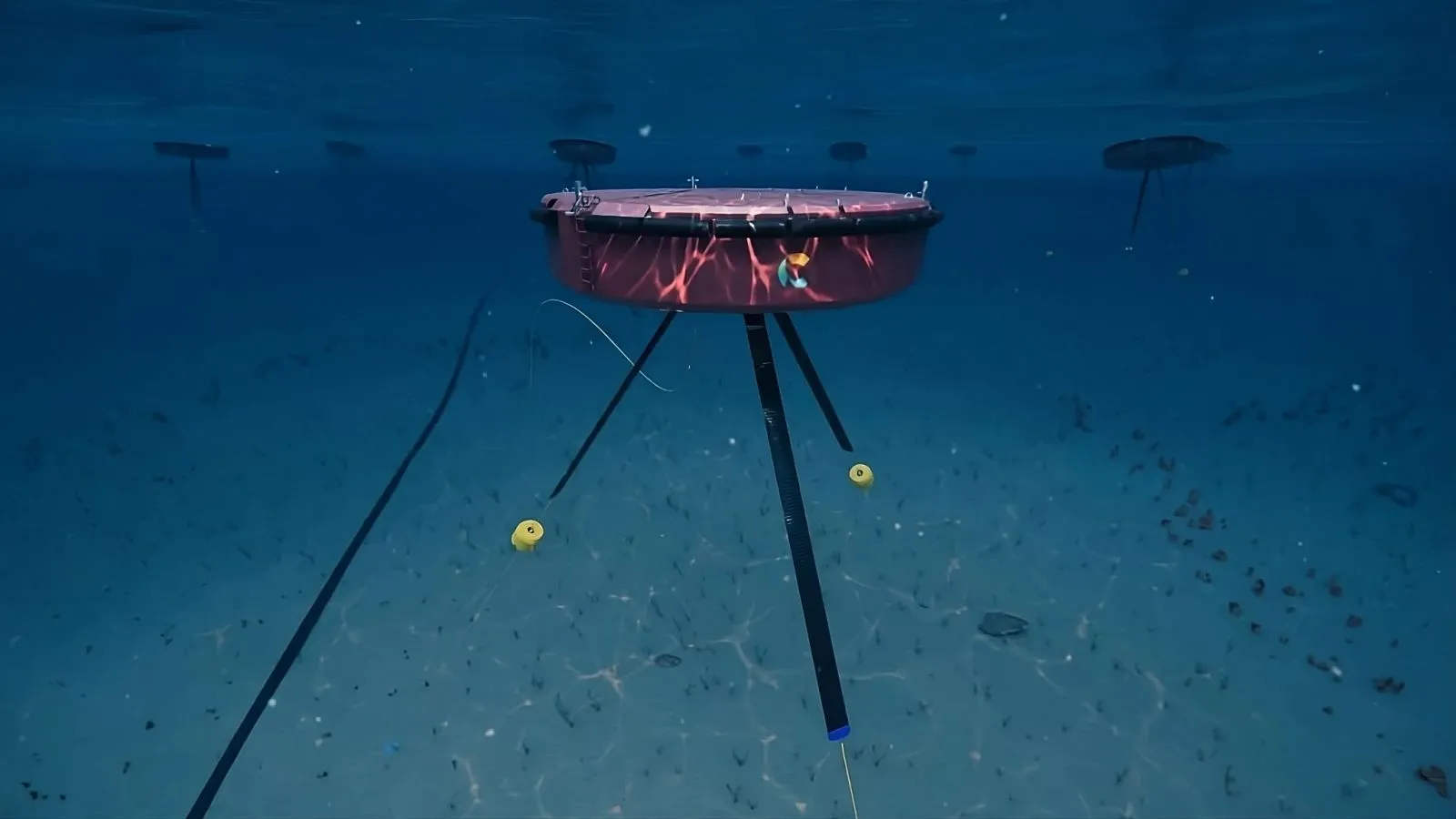Could this underwater saucer power millions of homes?
Published by Cédric,
Article Author: Cédric DEPOND
Source: Carnegie Clean Energy
Other Languages: FR, DE, ES, PT
Article Author: Cédric DEPOND
Source: Carnegie Clean Energy
Other Languages: FR, DE, ES, PT
Follow us on Google News (click on ☆)
Designed to harness wave energy, this groundbreaking technology is poised to disrupt the renewable energy market. But how exactly does it work?

Carnegie Clean Energy, an Australian company, has developed the CETO, a discreet and fully submerged wave energy converter. Unlike floating devices that mar coastal landscapes, the CETO remains invisible underwater, preserving the beauty of the coastlines without disrupting marine life while capturing the power of the waves.
Aiming for international certification, the company seeks to prove that CETO is as reliable and efficient as solar or wind technologies. The Lloyd's Register, a marine classification society, is currently assessing this technology to validate its safety and efficiency according to international standards.
Wave energy remains a largely untapped resource. According to the United States Department of Energy, it could single-handedly meet 60% of the nation's energy needs. Yet, its potential is largely overshadowed by solar and wind energy.
The CETO offers several advantages: it generates carbon-free electricity, minimizes visual impact, and ensures respectful coexistence with marine life. This technology is ideal for coastal regions sensitive to tourism or ecology. Developed and tested in Spain, the CETO prototype is expected to be deployed in 2025. This launch will be crucial for demonstrating its capabilities under real conditions and will mark a significant step towards its commercialization.
The growing interest in this innovation is not limited to Australia. Energy sector experts are closely monitoring its progress, ready to assess its potential role in the future global energy mix.
Is wave energy ready to stand alongside wind and solar? A new era is dawning, where the ocean could finally play a major role in the energy transition.
What is wave energy?
Wave energy, or wave power, comes from the movement of waves on the ocean's surface. This kinetic energy can be converted into electricity using specific devices known as wave energy converters (WECs).
Wave energy converters capture the energy generated by moving waves. They utilize floating or submerged mechanisms that oscillate with wave motion. This oscillation activates mechanical or hydraulic systems, transforming kinetic energy into usable electricity.